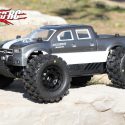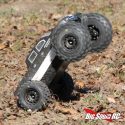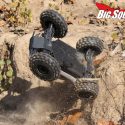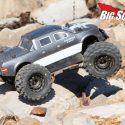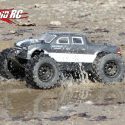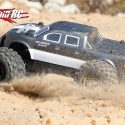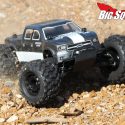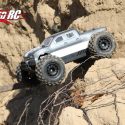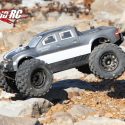Love them or hate them, drones are everywhere these days and while they may have drawn a bit more attention and scrutiny to the RC airplane pilots, they have also brought us FPV. First Person View flight from a 250 quad racer is exhilarating, to say the least, almost to the point of motion sickness! However, soaring gracefully at an altitude above your flying field while piloting your craft “from the cockpit” opens up a whole new world of fun and enjoyment for us fixed wing types. Whether you’re into thermalling with a warmliner, grabbing some great HD video or ripping some pylons up at the speed course, these items are sure to give you what you need in the FPV department.
ORIGIN HOBBYtowerhobbies.com, (217) 398-3636
SKYHUNTER FPV KIT
SKYHUNTER FPV KIT
With a wingspan of 71 inches, the Skyhunter from Origin Hobby might not be your average park flyer, but it’s as easy to use as any of them. Distributed by Tower Hobbies, this purpose-built for FPV flying model has a removable canopy to mount your camera gear and a payload capacity that would make any heavy-lift tug blush. Other features include a pusher prop, dual FRP (Fiber Reinforced Plastic) booms and the ability to accommodate for a variety of different LiPo packs. Able to use up to a 20,000mAh 4S pack for power, flight times are extended, to say the least. Split the difference and use a 10,000mAh LiPo to make room for HD camera gear or other peripherals. The control surfaces consist of only an elevator and ailerons to keep focused on the flying from the pilot’s seat. Not only that, but the generous wing area allows for some excellent slope soaring once you’ve gotten your fill of capturing FPV HD clips. The EPO foam construction makes for quick and easy repairs while the two-piece wing simplifies transport and storage. Field assembly is also a breeze. Place the wings together on the spar, attach four screws and you’re ready to take to the skies. Price- $129.99
TEAM BASEMENT RCtbrcwings.com, (902) 840-3397
REFLEX 38
REFLEX 38
Fixed wing FPV racing is one of the fastest growing segments of the UAV racing sport and TBRC has been at the forefront of it since day one. The TBRC Reflex 38 is the newest plane to take to the skies. It’s custom designed aerofoil and unique winglets make this craft the ideal race plane. The exceptional high-speed handling and the extreme durability of the foam construction make it love for many FPV racing pilots out there. The TBRC Reflex has won the NAFPV 2015 wing race and the Fatshark Frenzy 2015 wing race. The TBRC Reflex has a 38” wingspan and is made of durable EPP foam. The kit comes supplied with the foam, spars, winglets, elevons, equipment bay hatch and 3mm laminate. The large battery bay allows you to put in a variety of batteries to suit your flying style. The battery bay also includes a unique shelf, or secret compartment, at the back which allows you to tuck your wires out of the way leading to a cleaner setup and more space for components. Price- $135.00
TRICK RC
zagi.com, (360) 275-6853
ZAGI HP-60 W/3100KV MOTOR The evolution of the Zagi model moved naturally from hobbyists to a commercial and military UAV (unmanned aerial vehicle) training tool. NASA Ames, the US Navy, and many public/private schools and universities use the Zagi-60 to introduce students to UAV and FPV flight. The Zagi-60 design has expanded into the emerging FPV (first person view) market for research using FPV for military and civilian research. The Zagi HP-60 is graceful and fast flying 60-inch wing. This flying wing has lower wing loading making it a good camera platform and for UAV and FPV applications. The design offers lower wing loading for improved thermal performance and lower landing speed. More span improves stability too. Expand your fly zone with the five-foot flying wing. Whether you’re performing aerial mapping flights or giant scale FPV racing, the Zagi has got you covered and Trick RC serves them up in a variety of sizes. The special ingredient to the Zagi “sauce”, so to speak? The 3100Kv inrunner brushless motor. Using a ubiquitous 3S 2200mAh LiPo, you’re looking at a far stretch over 30,000 RPM. Now that’s cookin’ with gas! Price- $149.88
FATSHARK
hobbywireless.com, (210) 267-1421
PAN/ROLL/TILT CAMERA MOUNT Let’s say you’re a fixed wing type of guy who is looking to get into the FPV scene, but you’re a little weary of the fact that the camera is fixed. Perhaps you’re a seasoned formation pilot who is itching to get that much closer to your wingman. Heck, just being able to look in any direction while flying by yourself is enough of a selling point for a head tracker system. This unit from the leader in FPV, Fatshark, is sure to please, no matter what your application. Fatshark has introduced it’s new 3-Axis pan, tilt and roll Camera Mount System to go along with their revolutionary 3-Axis Trinity head tracker. Utilizing a high-speed metal gear base (pan) servo and 2 high-speed tilt and roll servos, the mount matches Trinity’s rapid motion capabilities perfectly. The System comes with 2 camera mounts, one for the fatshark 600tvl CMOS (20mm) and a second for 25mm cameras such as the new fatshark 420CCD V2. You do need the Trinity External Head Tracker module to use the camera mount to it’s fullest potential, but as the two of them ring in at less than 200 bucks combined, purchasing both of them is a no-brainer. Price- $49.50
hobbywireless.com, (210) 267-1421
PAN/ROLL/TILT CAMERA MOUNT Let’s say you’re a fixed wing type of guy who is looking to get into the FPV scene, but you’re a little weary of the fact that the camera is fixed. Perhaps you’re a seasoned formation pilot who is itching to get that much closer to your wingman. Heck, just being able to look in any direction while flying by yourself is enough of a selling point for a head tracker system. This unit from the leader in FPV, Fatshark, is sure to please, no matter what your application. Fatshark has introduced it’s new 3-Axis pan, tilt and roll Camera Mount System to go along with their revolutionary 3-Axis Trinity head tracker. Utilizing a high-speed metal gear base (pan) servo and 2 high-speed tilt and roll servos, the mount matches Trinity’s rapid motion capabilities perfectly. The System comes with 2 camera mounts, one for the fatshark 600tvl CMOS (20mm) and a second for 25mm cameras such as the new fatshark 420CCD V2. You do need the Trinity External Head Tracker module to use the camera mount to it’s fullest potential, but as the two of them ring in at less than 200 bucks combined, purchasing both of them is a no-brainer. Price- $49.50
Building on the already established ability of our purpose built Sky Eye as an FPV glider, our designers have pulled out all the stops to improve the original’s flying qualities and delivered the goods with the Cloud Surfer. The new T-tail configuration allows for improved stability and flight control responsiveness, both being primary concerns with any FPV camera platform especially in the slow speed flight envelope and the new look has been made even more distinctive by its sleek grey finish. This is a BIG model that boasts a huge 2-meter wingspan, but that said, there is no need to worry about getting the Cloud Surfer to your flying site. It has a two-piece plug-in wing assembly system enabling it to be transported in almost any motor vehicle and once at your destination, is easy and quick to assemble. Bigger flies better and this is especially true with FPV glider platforms and you can bet that the Cloud Surfer certainly fits the bill here. A huge wing area coupled with pre-installed flaps ensures stable and almost un-stallable flight which is exactly what you are looking for as an FPV pilot. Price- $77.59
SPEKTRUM RC
spektrumrc.com, (217) 352-1913
ULTRA MICRO FPV SYSTEM WITH HEADSET
spektrumrc.com, (217) 352-1913
ULTRA MICRO FPV SYSTEM WITH HEADSET
Used to be, if you wanted to experience FPV (First Person View) flight, you had to piece together a system yourself. Once you did, you then had to figure out how to make everything work together. The Spektrum VS1100 Ultra Micro FPV System eliminates all the guesswork by giving you everything you need in one box. Camera, headset, batteries, charger – it’s all there, all compatible and can be ready to go in minutes. This amazing bit of Spektrum technology combines an FPV camera, transmitter, and antenna in a single unit no bigger than a thimble. Installation is easy and can be done in seconds. No soldering or special skills are required. You simply attach it to your model and plug in a 1S battery (sold separately). A Y-harness connector is included if you want to eliminate the weight of a separate battery and power the camera with the same 1S flight battery that powers the aircraft. Features a full-fledged Fatshark set of Teleporter V4 goggles and a 25mw 5.8GHz VTX combined with a camera. Simply mount it to an existing airframe in your hangar and get your FPV on in style! Price- $299.99
TACTIC RCtacticrc.com, (217) 398-8970
DRONEVIEW FPV WIFI MINI CAMERA
DRONEVIEW FPV WIFI MINI CAMERA
If you’re looking to do a little recording from high above, but can’t swing the price of a full-blown FPV setup or perhaps you’d just like some HD footage of your FPV exploits, check out the new DroneView camera from Tactic RC. The DroneView is the mini-sized camera for any and all RCers, hobbyists or action video enthusiasts! It’s small and lightweight so you can attach it to your bike, board or virtually any RC model—and it’s First Person View-capable with the free DroneView app. Enjoy exciting videos and still shots, all at an affordable price. The DroneView Mobile App enables you to link your mobile device to the Tactic DroneView Wi-Fi Camera and instantly view a live feed. Record video and shoot still photos in real time. Export the video and pictures directly to your mobile device and easily share on popular social media websites. Adjust important camera features right from the app, such as brightness and contrast. For added versatility, the camera feed can also be seen and controlled by two devices simultaneously. Price- $79.99

